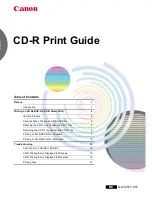
10
Reinstall the top plate with the (4) #6-32 x ½ screws flush with the top of the top plate- but do no tighten
the four screws at this time. Remember to reinstall the top plate with its INDEX MARK in the same
location it was before. See figure 4 above for reference.
With your hand hold the top vise jaw on top of the top plate and at the same time raise up the bottom vise
jaw so the two vise jaw parts engage each other as if they were clamping a key. With your other hand grab
the edges of the top plate and pull it back until it contacts the short tabs on the open “horseshoe” end of the
top vise jaw. You want to take up as much of the slack between the top and bottom vise jaws as you can.
Now
tighten the four #6-32 screws with your 7/64” Allen hex wrench readjust if necessary to get a good
fit.
You may now reinstall the knurled knob, 3-piece radial thrust bearing (please clean it first) and key clamp
knob assembly – you may secure the top vise jaw in place with the knurled knob at this time.
You will secure the bottom vise jaw now. Before tightening the two #10-32 screws- use the key clamp
knob to close vise jaws together with moderate force without a key.
Now
tighten the two #10-32 screws
with your 5/32” Allen hex wrench. Loosen the key clamp knob a few turns and push down on it to open
the vise jaws. You have created a matched pair of vises on your key machine that are about as good as they
were when the machine was new.
7.
Top Shoulder Key Gauging
FIGURE 5
Standard cylinder keys should always be Top Shoulder Gauged. Use the machine’s full-function flip-up
key gauges. We do not recommend bottom shoulder gauging because key blank manufacturers do not
always maintain a reliable correlation between bottom and top shoulder positions on the key blanks they
make. See figure 5 above.
Always remember
to flip DOWN your key gauges before cutting a key. Failure to do so may damage the
key gauge and key gauge shaft with your cutter wheel.
Summary of Contents for RY256
Page 2: ...2...





























